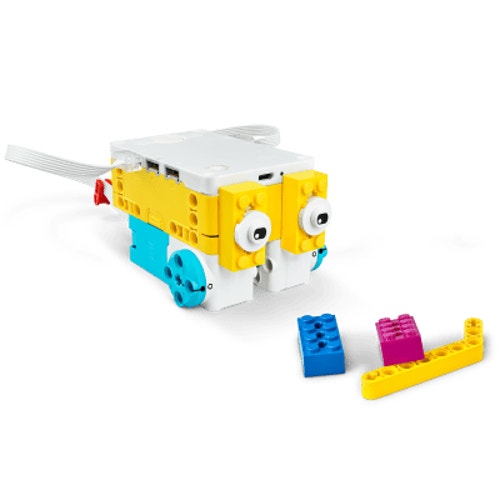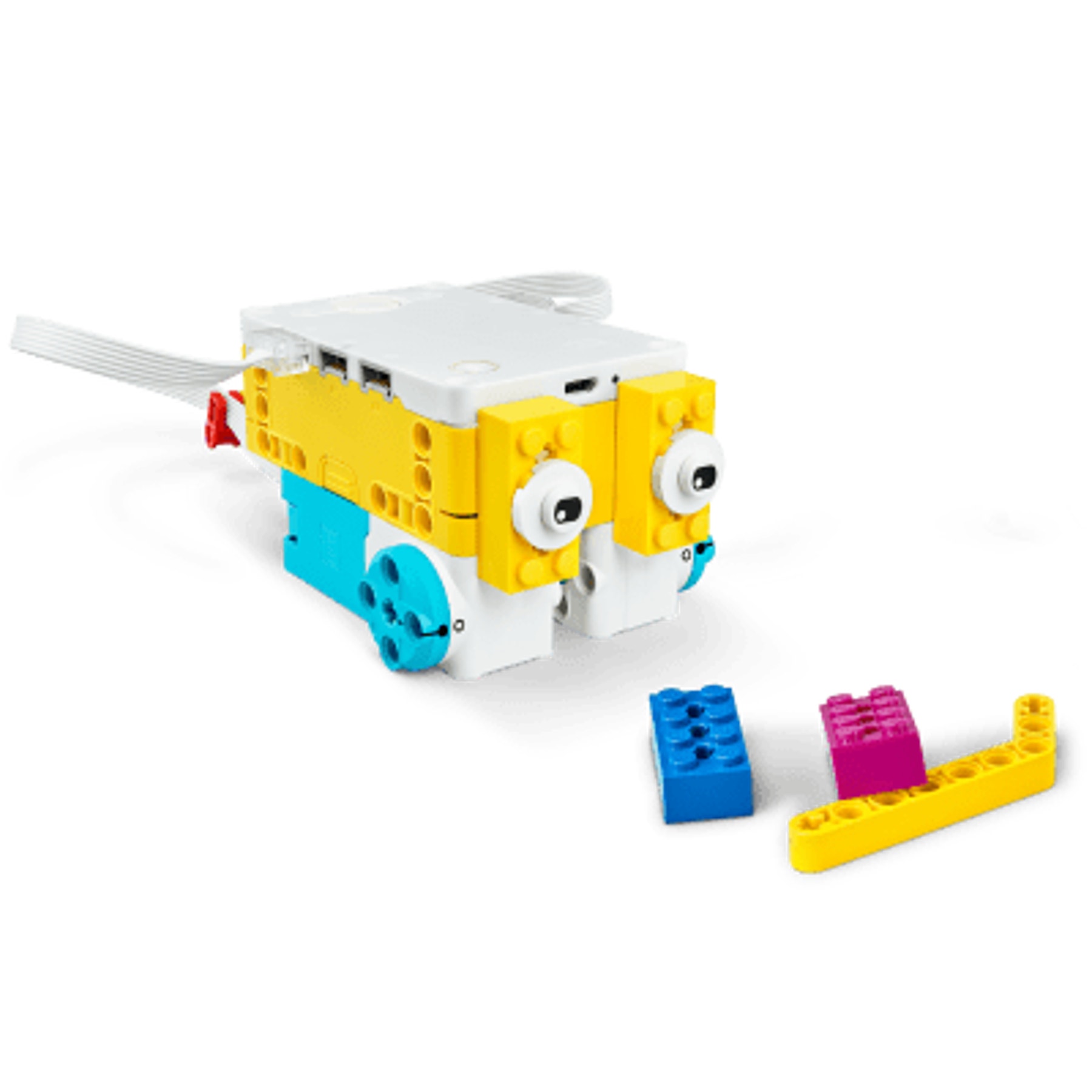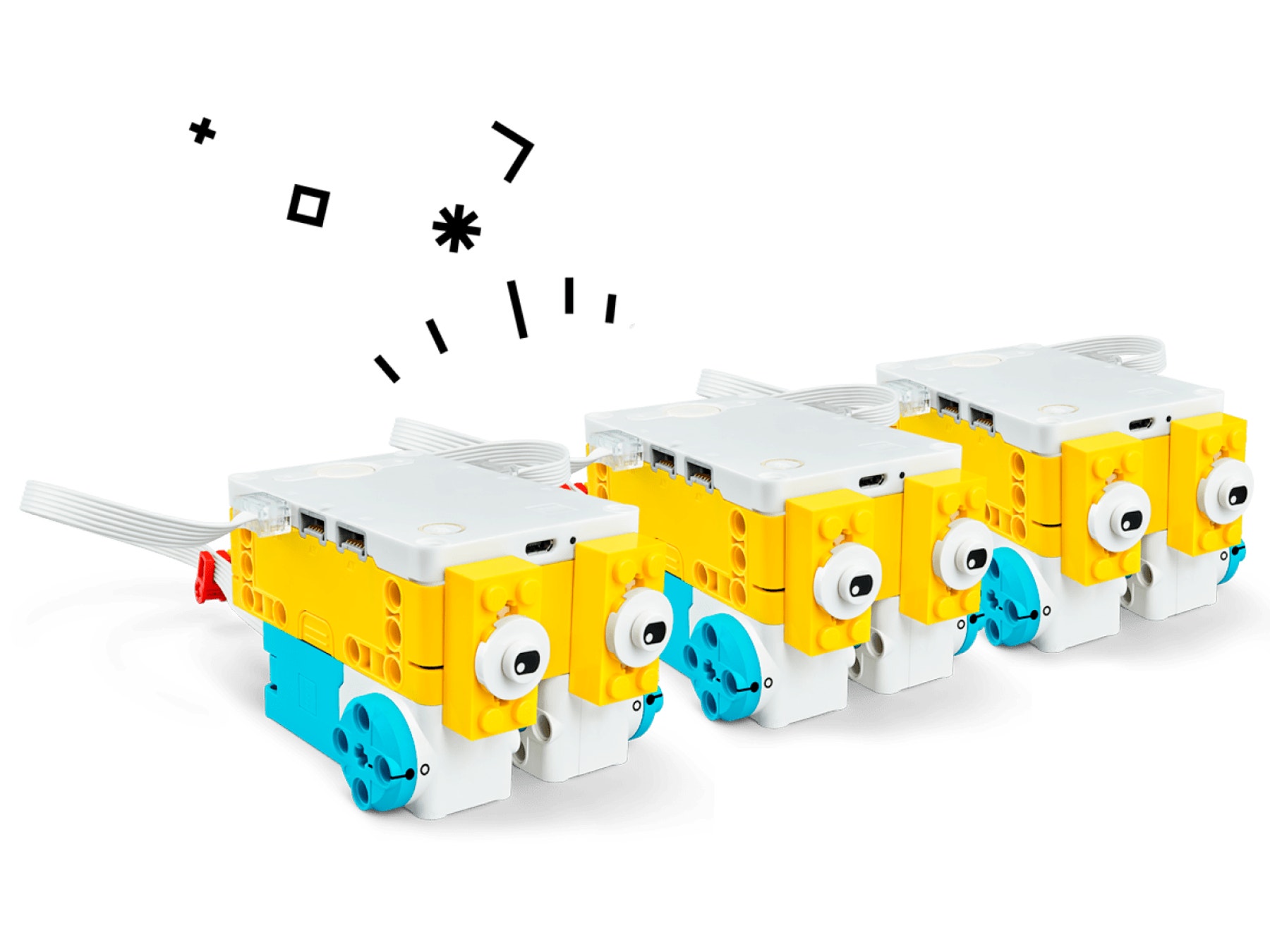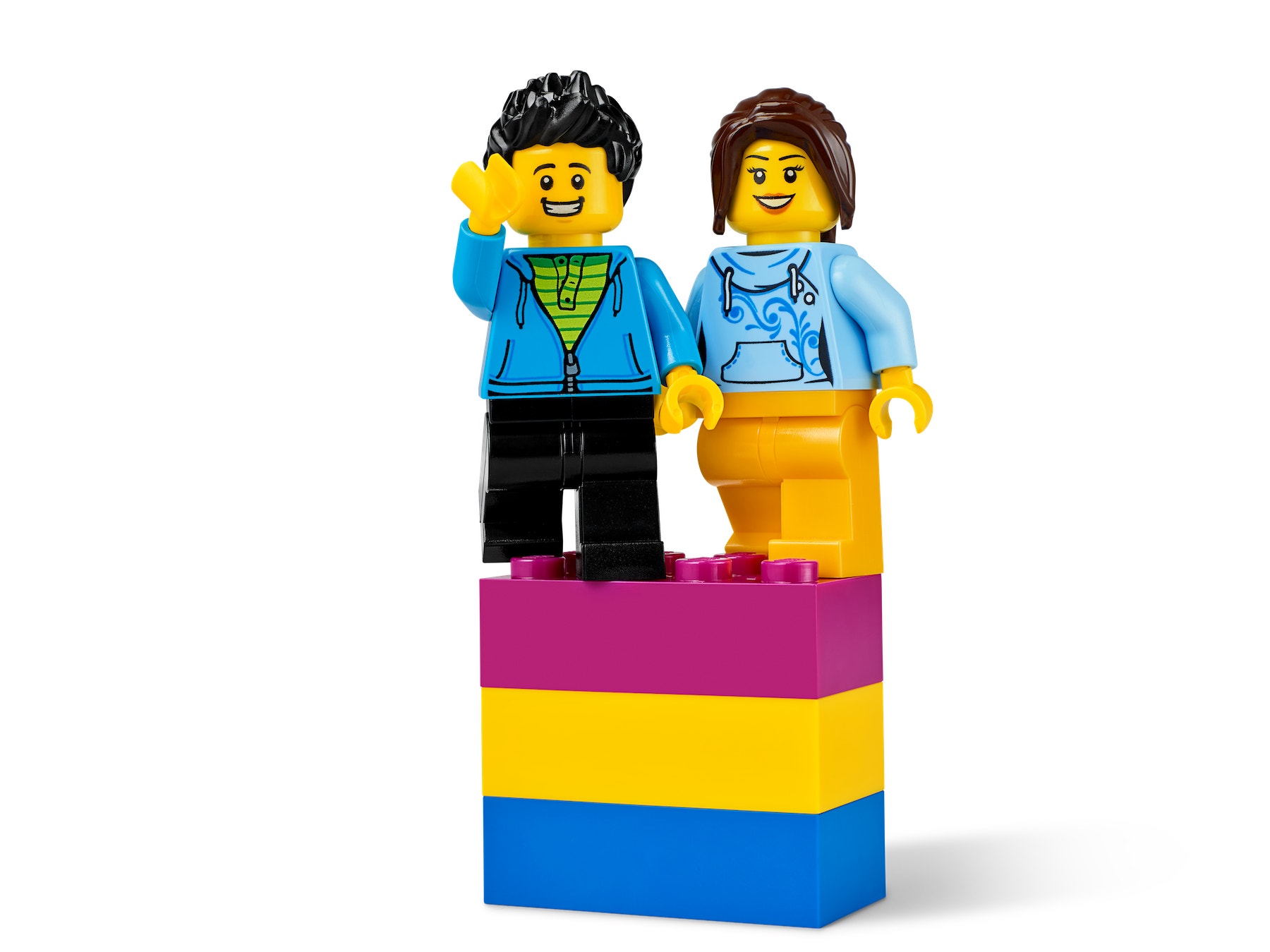Hopper Race
Design multiple prototypes to find the most effective way to move a robot without using wheels.

Lesson plan
1. Prepare
- Read through the student material in the LEGO® Education SPIKE™ App.
2. Engage (5 Min.)
- Use the ideas in the Ignite a Discussion section below to engage your students in a discussion related to this lesson.
- Use the video to explain the lesson.
3. Explore (25 Min.)
- Have your students in pairs to build the hopper model.
- Ask them to play the program to see how the hopper moves.
- Have them prototype new legs to move the hopper's body forward faster. Highlight that they cannot use wheels for locomotion.
4. Explain (5 Min.)
- Facilitate a discussion by asking the students to describe the methods they've used to improve their hopper's movement.
5. Elaborate (10 Min.)
- Prepare the test track by setting up start and finish lines using LEGO bricks.
- Give the teams 5 minutes to test and improve their models before the final race.
- If time allows, encourage them to give their hoppers some character by adding bricks and other materials from around the classroom. They can also place bricks on the test track, creating an uneven surface that's more difficult to walk over.
- Don't forget to leave some time for cleanup.
6. Evaluate
- Give feedback on each student's performance.
- You can use the assessment rubrics provided to simplify the process.
Ignite a Discussion
Start a discussion about prototyping by asking relevant questions, like:
- What's a prototype?
- What's the benefit of having multiple options for a solution?
- How do you usually generate ideas before prototyping them?
- Have you ever prototyped an idea? How did you do it?
Have your students watch this video to see what they're about to do.

Building Tips
Create Original Solutions
There are almost infinite solutions to this problem and this lesson is an opportunity for your students to really think outside the box. Once they think they've found the best solution, challenge them to find another one.

Race Against the Teacher
Challenge your students to outrun your grasshopper! Use this example to demonstrate how your students can design nimble legs and add character to their hoppers.

Let Inspiration Flow
Have your students share their best prototypes. This is guaranteed to increase the iteration cycle, and their motivation to build the fastest hopper!
Suggest elements for further exploration, such as:
- Length of the legs or stride
- Motor speed
- Walking surface (there's less friction on a smooth tabletop)
Coding Tips
Main Program

Differentiation
Simplify this lesson by:
- Exploring idea generation using the Ideas, the LEGO Way lesson
Take this lesson to the next level by:
- Making the test track uneven by adding loose bricks between the starting line and finish line (changing the criteria for the race)
- Incorporating the math or language arts extension(s)
Assessment Opportunities
Teacher Observation Checklist
Create a scale that matches your needs, for example:
- Partially accomplished
- Fully accomplished
- Overachieved
Use the following success criteria to evaluate your students' progress:
- Students can describe the problem they're trying to solve.
- Students have generated various ideas for solving the problem.
- Students have designed, even if not functioning, multiple solutions to the problem.
Self-Assessment
Have each student choose the brick that they feel best represents their performance.
- Blue: I've prototyped one functioning set of legs.
- Yellow: I've prototyped two or more functioning sets of legs.
- Violet: I've modified my prototypes several times and have improved the efficiency of my hopper.
Peer-Assessment
Encourage your pupils to provide feedback to one another by:
- Having one pupil use the coloured brick scale above to score another pupil’s performance
- Asking them to present constructive feedback to one another so that they can improve their group’s performance during the next lesson

Language Arts Extension
To incorporate language arts skills development:
- Have your students produce a presentation about biomimetics.
- Ask them to describe how their hopper is biomimicking the movement of an animal.
Note: This will make for a longer lesson.
Math Extension
To incorporate math skills development:
- Have your students find the speed of their hopper in cm/sec (or in/sec).
- Have them figure this equation for their hopper:
Distance traveled = Speed * Time
- Have them predict the distance their hopper would travel after 8, 16, and 24 seconds.
Note: This will make for a longer lesson.
Career Links
Students who enjoyed this lesson might be interested in exploring these careers pathways:
- Manufacturing And Engineering (Pre-Engineering)
- Media And Communication Arts (Digital Media)
- Transportation (Automotive Technology)
Teacher Support
Students will:
- Explore the process of creating prototypes to solve a problem
Australian Curriculum: Technologies
ACTDIP017
Define problems in terms of data and functional requirements drawing on previously solved problems
ACTDIP020
Implement digital solutions as simple visual programs involving branching, iteration (repetition), and user input
ACTDEP024
Critique needs or opportunities for designing, and investigate materials, components, tools, equipment and processes to achieve intended designed solutions
ACTDEP026
Select appropriate materials, components, tools, equipment and techniques and apply safe procedures to make designed solutions




